A mushroom named after the Queen and new plant species recorded by Kew in 2022
- Published
- comments
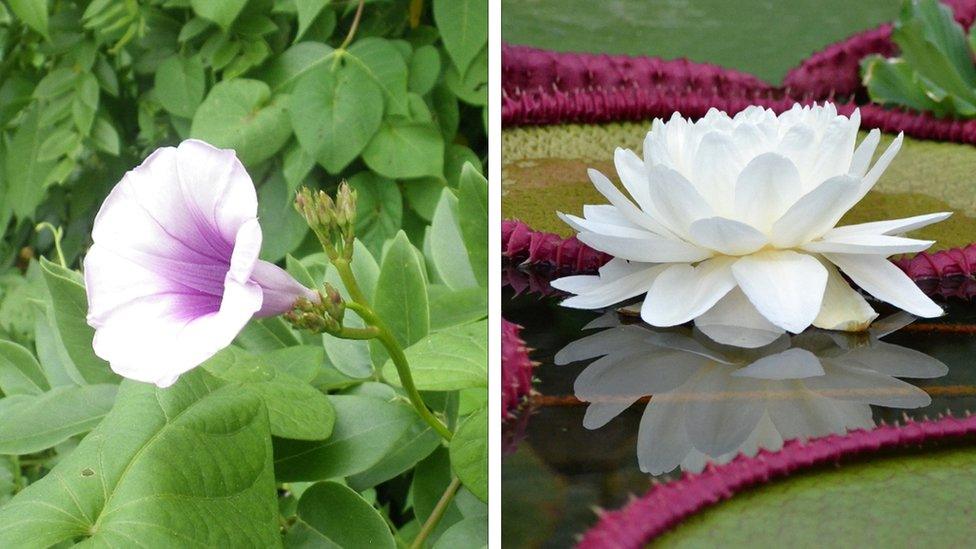
A giant waterlily, a hedgehog mushroom named after the Queen and a herb threatened by pigeon poo are just some of the new plants and fungi discovered by the Royal Botanical Gardens, Kew (RBG Kew) in 2022.
Approximately 90 different types of plants and 24 fungi have been named this year and some of them are extremely rare.
Fungi is the official group name, or 'Kingdom', that all species of fungi belong to.
For example, mushrooms, toadstools, yeasts and mould are part of the Fungi Kingdom.
There are seven types of Kingdom which categorise life on Earth. These include the Plant, Animal and Bacteria Kingdoms.
Some of the new species come from the rainforests of central Africa, the Atlantic Forest of Brazil, and even the caves of South East Asia.
Let's check out some of these weird and wonderful species below.
The rare Queen's hedgehog
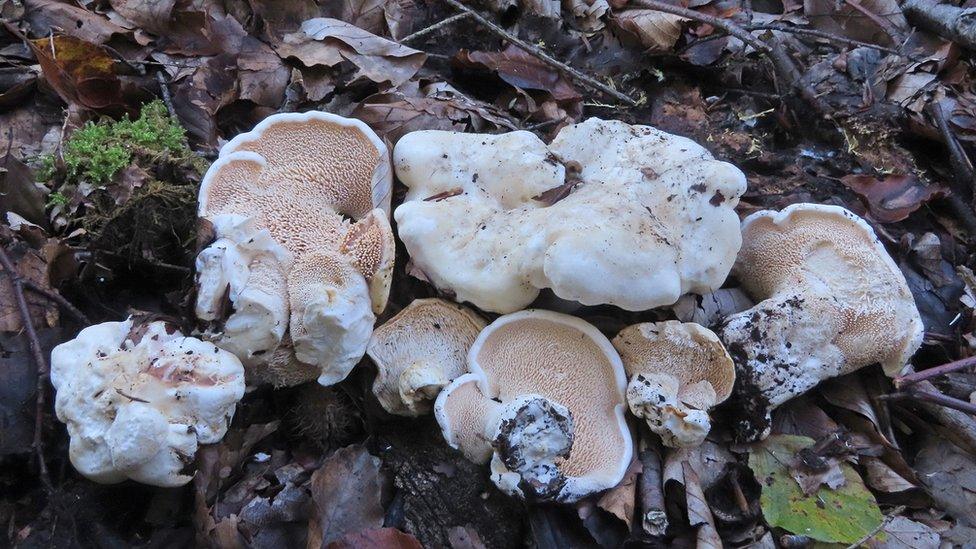
This rare white mushroom was named in honour of Queen Elizabeth II .
It's called a hedgehog because it has soft white spines and DNA has revealed that this mushroom is a unique European species and not the North American fungus people once thought it was.
DNA is the building blocks of all life on Earth, it's what makes you, YOU! It is a chemical that carries genetic information which has all the instructions that a living thing needs to grow, and function.
Dr Tuula Niskanen, the research leader in Kew's fungal diversity team, said fungi used to be "such a mystery" compared to plants and many animals.
"Only in the last few decades, thanks to the arrival of DNA-based methods, have we started to understand the true diversity of this kingdom," she said.
The giant waterlily

This newest member of the waterlily family is named after Queen Victoria - it's the new giant Bolivian waterlily and Kew are calling it 'the world's biggest giant waterlily'.
It is found in the wetlands of Amazonian Bolivia and the species is said to be 'vulnerable to extinction.' Which means it might die out soon.
Its leaves can reach up to an impressive 3.3m across and scientists saw a number of differences in its shape, size, and flowers, spines, and seeds.
The 'Garland of nails'
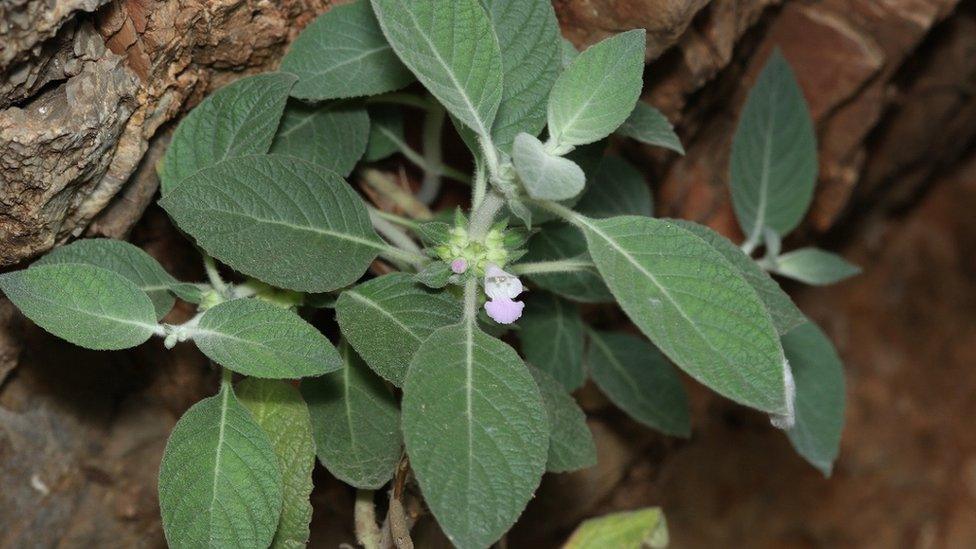
Get ready... this one has a long name it's the Gomphostemma phetchaburiense. (Can you say that!?)
It's a leafy herb with pink-purple flowers and it's around 30-50 cm tall. They are considered 'Critically Endangered' in the wild as there are less than 50 plants left!
All of them live at a single site at the opening of a limestone cave and they're considered to be threatened by the poo of a nearby colony of rock pigeons.
The Busy Lizzie

This threatened 'busy lizzie' has some brightly coloured magenta pink and white flower petals.
They can be found in the Ebo Forest in Cameroon. The forest is threatened because of deforestation even though logging has stopped following protests in 2020.
What is deforestation?
Deforestation is the deliberate destruction of rainforest to make way for areas for human use, such as farmland for cattle, crops, or wood to be used for building.
Many forests around the planet have been cleared in this way but the most famous is the Amazon rainforest - the world's largest tropical rainforest.
The Turkish "winter daffodil"
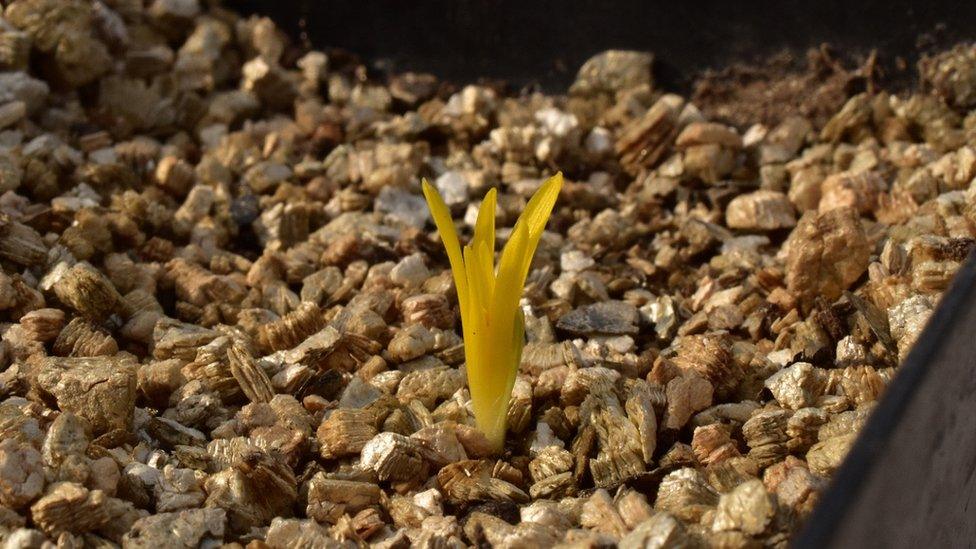
This Turkish 'winter daffodil' has non-opening flowers and is called Sternbergia mishustinii.
It was first collected from the seed of an unknown plant near Mersin in southern Turkey in 1997 by the Ukrainian naturalist Ruslan Mishustin. It took years of research to be identified as a unique species.
This kind of plant is known to contain anti-inflammatory and antioxidant features, making this new species a potential source of medicine.
The sweet potato
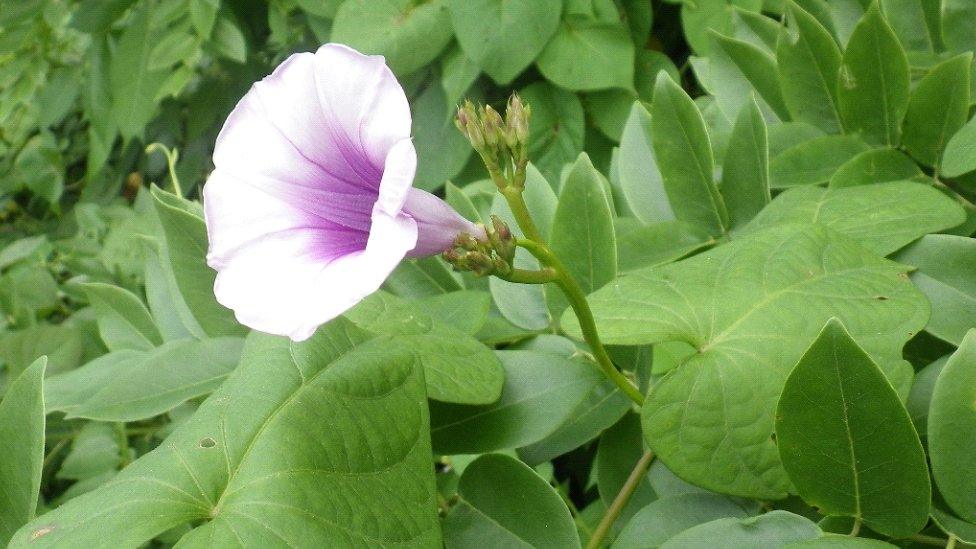
This type of flower is actually called the sweet potato!
It is a big food crop from tropical America and it provides millions of people with food every single day.
For many years, the parent species of the well-known sweet potato had remained a mystery but scientists think the relatives of this flowering plant are from coastal Ecuador, which is in western South America.
- Published21 December 2022

- Published20 December 2022

- Published19 December 2022

